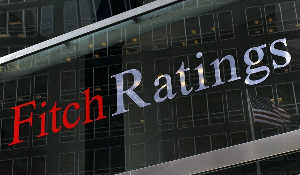In this era of Public Sector (PS) reforms risk management is a critical management tool that needs to be incorporated in the planning, organising, leading and controlling all the PS operations at all levels (strategic, operational and tactical).
Risk management should be an integral part of doing business not a separate program. Risks are inevitable - don?t waste time and resources searching for risk-free business activities. Risk can be reduced, but can never be entirely eliminated. Managing risk is not something for the risk area - it has to be embedded in the system and across the whole organisation. In other words risk is not the sole responsibility of the risk managers of an organisation. It has to be shared and understood across the organisation. Thus you can not run risk from a risk department.
Whatever innovation is suggested, there will always be someone who considers it too risky. Since change is never risk-free, progress can only be made if some well-considered risks are taken. Success can only come from risk taking. A major function of management is to have plans in place to identify, analyse, evaluate and manage risks. Organisations must progress and survive despite the risks they take.
The impending promulgation of charters within the Ghana Public and Civil Services (ref: www.ghanaweb.com: GeneralNews of Wednesday, 27 April 2005, will usher in ?change management? procedures and processes to achieve some desired outcomes or objectives on budget, on time whilst meeting the stipulated quality requirements. This will involve risk taking.
One, in this context, might ask: ?What is risk?? Risk is the chance of something happening that will have an impact on objectives. Favourable risks are called opportunities, whereas unfavourable risks are called hazards. Risk is a measure of the likelihood and consequence of not achieving a defined goal, and is particular to time and place.
From the above definition of risk, one might then ask, ?How does one manage risk to efficiently achieve one?s goals?? According to the literature ?Risk management? is the term applied to a logical and systematic method of establishing the context, identifying, analysing, evaluating, treating, monitoring and communicating risks associated with any activity, function or process in a way that will enable organisations to minimise losses and maximise opportunities. Risk management is as much about identifying opportunities as avoiding or mitigating losses.
Risk management must be considered in relation to an organisation?s people, assets and physical environment, reputation and image, legal issues, business continuity, and finances. Risk management is not just identifying risks. You must also quantify risks by some means, and predict their impact. Once you have performed this measurement, you have to decide whether the risk is acceptable or unacceptable.
A typical case study is the recent inferno on board a ship at the Tema PSC Shipyard and Drydock, which claimed 17 lives. It may have been caused by a systemic or operational failure which could have been mitigated had the proper risk management program been in place. To minimise the likelihood of such an unfortunate incident happening again any ship (commercial or military) which resulted in catastrophic consequence, an enhanced risk management system should be used in any future refitting, maintenance or repair work on board.
Risk management should be a continuous, iterative process of problem identification and resolution. The emphasis must be on proactive, not reactive management. Don?t rely on risk recovery measures to clean up after an unwanted event occurring, or reduce the consequence if it does. The risk management structure needs to be embedded into the fundamental role of both the Public and Civil Services and must be an essential element of compliance.
It can be said, at this juncture, that risk management is the agency?s means of identifying and measuring risk, assessing the risks and developing options for handling them. It should consist of a sequence of well-defined steps that support better decision-making by contributing to an insight into risks and their impacts. Risk management involves: assessing the chances of failure and looking for ways to reduce the probability and finding ways to reduce the level of damage if a failure occurs.
There are a number of reasons why these two steps aren?t carried out as a matter of course. For example: time pressure (?The boss is on my back ? he needed it yesterday.?) and lack of responsibility (?It is not my money, it is government business, not mine) and other related signs of indifference and apathy.
Apparently the Government is making attempts to build a team of exceptional leaders to drive change and lead the Public and Civil Services to new levels of excellence via the ?revamped? charters. The public sector agencies are currently undergoing a comprehensive change management program by implementing the said charters to achieve the required results in an efficient and cost-effective manner - thus making the organisations more business-like, accountable and outcome driven. This approach to make in-roads to a more sound and pervasive framework would require a ?cultural change? within the organisations and this too will take some time to achieve.
Risk management is not static but dynamic and needs to be reviewed with time. All practitioners within an organisation, irrespective of position, role or responsibilities should note that that the underpinning philosophy of internal standards that exceed regulatory requirements is the desire for continual improvement. And in this particular context what needs to be considered as prime focus, inter alia, are customer service, consultation, communication, information sharing and continuous professional development and training. The lax and unquestioning oversight by line managers needs to be rectified.
In conclusion it is imperative and of paramount importance to note that for everyone in risk management, having a risk management framework is not the panacea for the myriad of management problems within an organisation but it is how you execute it and your attitude to it that is the key.



















